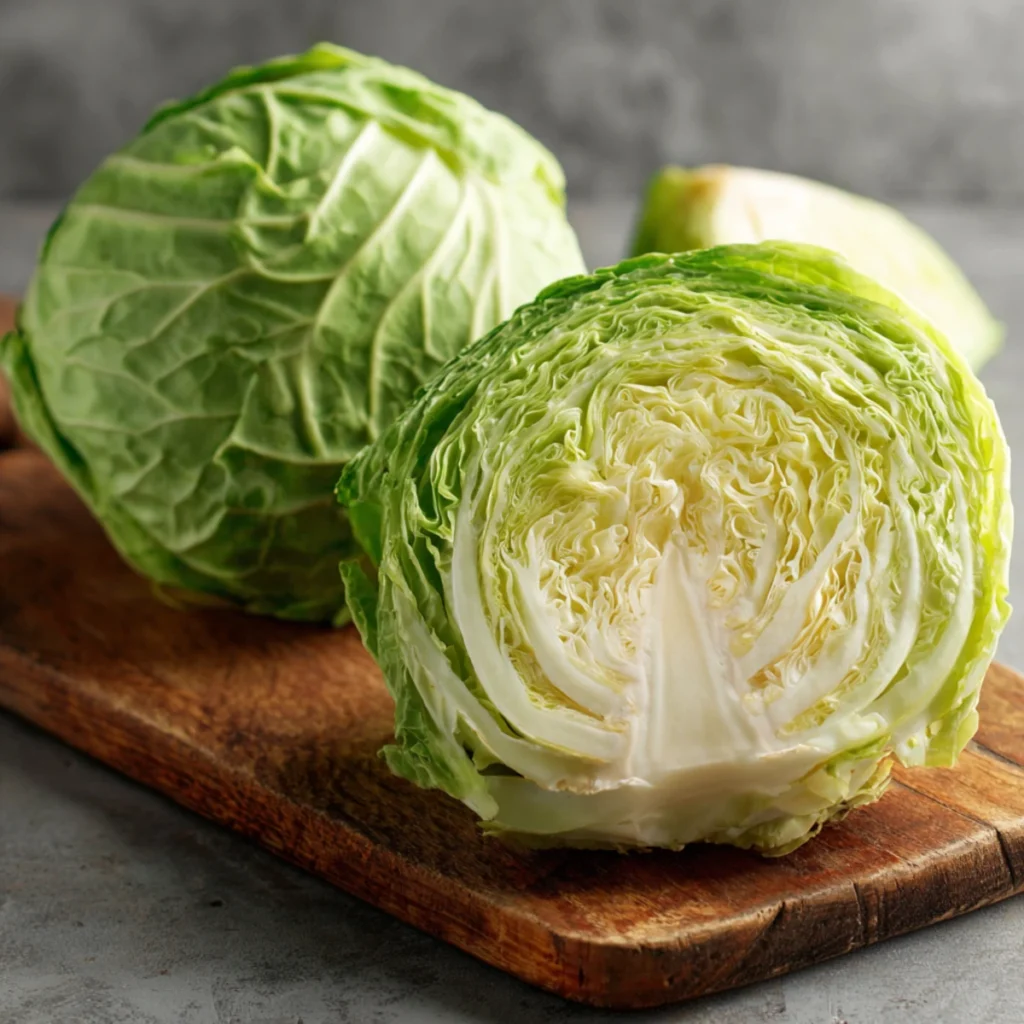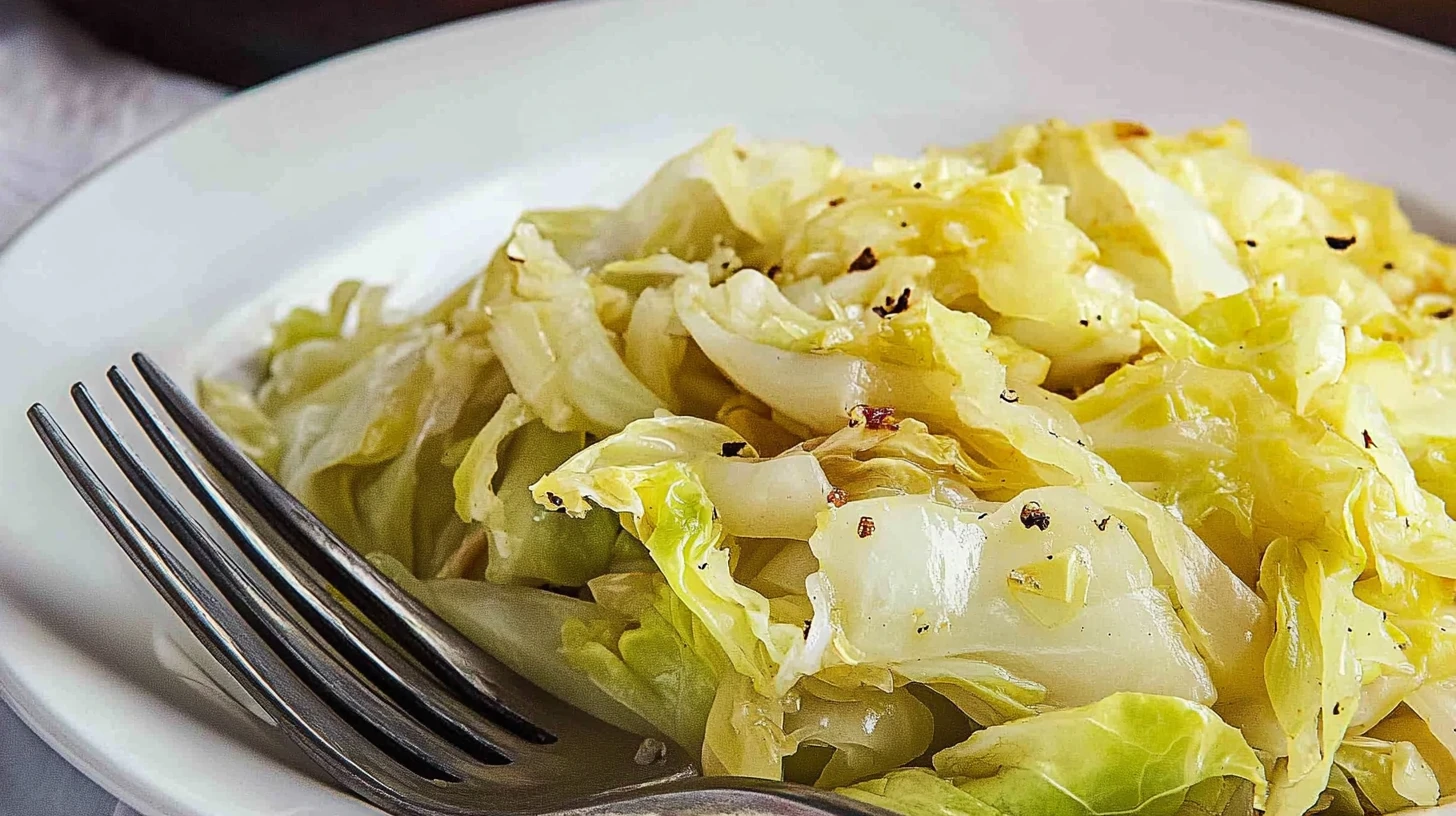How to cook cabbage in a crock pot and get rich, tender results every time? Take a cue from French kitchens, where cabbage is never rushed and flavor builds slowly. Letting it simmer low and slow means no stirring, no burning, just soft, fragrant leaves that soak up every bit of seasoning. Whether you’re making a cozy side or a full meal, the crock pot gives you hands-off ease with delicious payoff. In this guide, you’ll learn the best cook times, seasoning tricks, and texture-saving tips to make bland, soggy cabbage a thing of the past.
Table of contents

All the ways to cook cabbage (and why the crock pot wins)
Cabbage is one of those shape-shifting vegetables that adapts to whatever method you throw at it; quick, slow, wet, dry. Boiling is the classic no-fuss route: just drop chopped or wedged cabbage into salted boiling water and let it simmer until soft, usually 5 to 10 minutes. It’s fast, but easy to overdo, and without seasoning, the results can fall flat.
Steaming preserves more texture and nutrients. It’s gentler than boiling, ideal for shredded cabbage or wedges, and takes just a few minutes depending on the cut. But you’ll need to keep an eye on it to avoid turning it limp. For more flavor and edge, there’s sautéing: a hot pan, a drizzle of oil, and a few minutes on the stove give cabbage a golden, caramelized finish that’s anything but boring. Still, it requires attention and stirring, so it’s not exactly hands-off.
Roasting steps things up. At 400°F, thick slices or wedges of cabbage crisp up beautifully in the oven, delivering smoky flavor and crispy edges that pair well with bold seasonings. The tradeoff? More prep and oven space. Then there’s fermenting, a different kind of transformation. Think sauerkraut or kimchi: chopped cabbage left to slowly ferment over days or weeks. It’s not fast, but it’s loaded with flavor and probiotics.
And finally, there’s slow cooking. This is where cabbage gets truly cozy. In a crock pot, it breaks down gently, soaking up broth, spices, or even tomato sauce while retaining just enough bite. No stirring, no hovering, just layers of flavor built over time. Whether you’re crafting a hearty one-pot meal or a simple side dish, the slow cooker makes cabbage shine with barely any effort.
Step-by-step guide for cooking cabbage in a crock pot
Whether you’re making a cozy side dish or building a full one-pot meal, these simple steps will show you exactly how to cook cabbage in a crock pot for tender, flavorful results.
Choose and prep your cabbage
Start with a fresh, firm head of cabbage with tight, crisp leaves. Green, red, and Savoy all work beautifully in the slow cooker. Remove any wilted outer leaves, then cut into wedges, thick slices, or shredded pieces depending on the texture you want.
Add liquid (but not too much!)
Slow cooker cabbage doesn’t need much moisture. Add just ½ to 1 cup of broth, water, or tomato sauce to create gentle steam and prevent burning. The cabbage will release its own juices as it cooks.
Layer for even cooking
If you’re cooking only cabbage, spread it in an even layer across the crock pot. If adding heartier ingredients like carrots, potatoes, or meat, place those at the bottom so they cook through fully while the cabbage steams gently on top.
Season generously
Cabbage soaks up flavor beautifully. Use garlic, onion, smoked paprika, cumin, salt, and pepper. Don’t forget a splash of vinegar or lemon juice at the end to brighten everything up.
Choose the right cooking time
Cook on low for 6 to 8 hours for deeply flavored, fork-tender cabbage. In a hurry? Cook on high for 3 to 4 hours. Just remember: shredded cabbage softens faster, while wedges or large slices take more time.
Check for doneness and adjust seasoning
When it’s done, taste the cabbage and adjust the seasoning if needed. Prefer more texture? Cook a little less next time. Want it extra soft and silky? Let it go longer. Slow cooking is forgiving.
Pro oh là là tips for cooking cabbage in a crock pot
To coax out the best from your cabbage, treat it the way the French might treat a simple soupe aux choux, with care, subtle richness, and just the right balance of patience and flair.
Start by adding a little butter or olive oil to the pot. It doesn’t take much, but that bit of fat rounds out the flavors and keeps the cabbage from going too limp or watery. The texture becomes silkier, the taste more full-bodied, like a countryside stew left to simmer all afternoon.
Toward the end of cooking, brighten the whole dish with a splash of something acidic. A trick often used in Provençal kitchens, just a touch of apple cider vinegar, balsamic, or fresh lemon juice wakes everything up and keeps the flavors from falling flat. It’s like adding sunlight to something earthy.
And don’t forget how you build the pot matters. Tuck your root vegetables or meats down at the base where the heat is strongest, and let the cabbage rest gently on top. This way it steams rather than stews, staying tender but not soggy. Go light on the liquid, since cabbage releases quite a bit on its own. If you prefer a bit of bite, stick to the lower end of the cook time, about six hours on low or three on high. That’s the sweet spot between cozy and crisp.
Frequently asked questions
Can I put raw cabbage in a crock pot, or does it need to be pre-cooked?
Yes, you can add raw cabbage directly to the slow cooker. It will soften gradually as it cooks, absorbing the flavors around it. Pre-cooking isn’t required, but if you prefer a firmer texture or a touch of caramelization, a quick sauté before adding it in can help.
Can I cook cabbage in a crock pot without adding any liquid?
Sometimes, yes. Cabbage naturally releases moisture as it cooks. If you’re combining it with juicy ingredients like tomatoes or onions, you may not need extra liquid. Still, adding a small amount of broth or water, around half a cup, helps prevent scorching and enhances flavor.
Should I stir cabbage while it’s cooking in a slow cooker, or leave it alone?
It’s best to leave it alone. Slow cookers provide even heat from all sides, so stirring is not needed. Opening the lid too often can let out heat and extend the cook time. If you want to check the texture or add more seasoning, wait until the end and give it one gentle stir.
How do I keep my cabbage from smelling too strong while cooking?
To soften the aroma, add vinegar or lemon juice during cooking. This helps cut the sulfur scent and brighten the overall flavor. Herbs like bay leaves, garlic, or onions also mellow the smell. Try not to overcook the cabbage, as that tends to make the odor stronger.
Can I freeze slow-cooked cabbage for later use?
Yes, slow-cooked cabbage freezes well. Let it cool completely before transferring to an airtight container or freezer bag. It will keep for about three months. The texture will be softer after thawing, but reheating with a bit of fresh seasoning can bring back its flavor and comfort.
Slow-cooking cabbage in a crock pot is one of those quiet kitchen joys. It asks so little, just time and a bit of trust, and gives back something tender, savory, and deeply comforting. Whether you’re letting it bubble away as a simple side or building it into a heartier meal, the slow cooker draws out cabbage’s sweeter side, soaking up every herb and spice along the way.
With just a bit of prep and the right touch of seasoning, you’ll have a pot full of flavor that tastes like it’s been passed down from a slower, softer season. The kind of dish that doesn’t rush you. The kind that feels like home.
***
Looking for more cozy ideas to round out your plate or warm up your week? Here are a few Oh Là Là favorites that would sit beautifully next to a slow-simmered cabbage dish:

